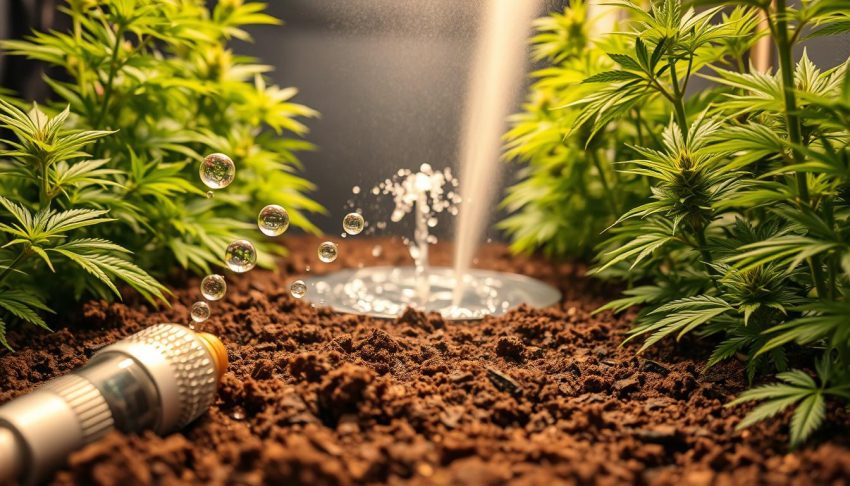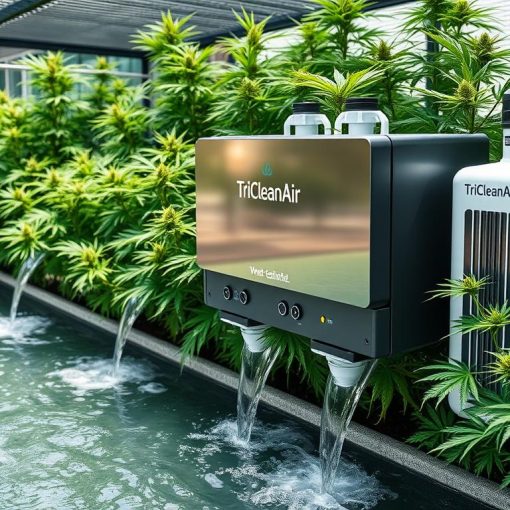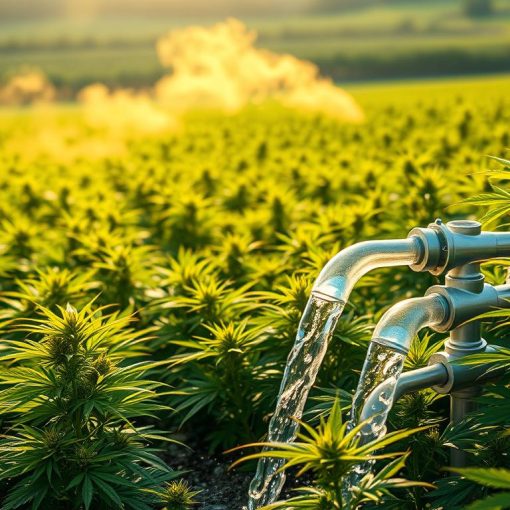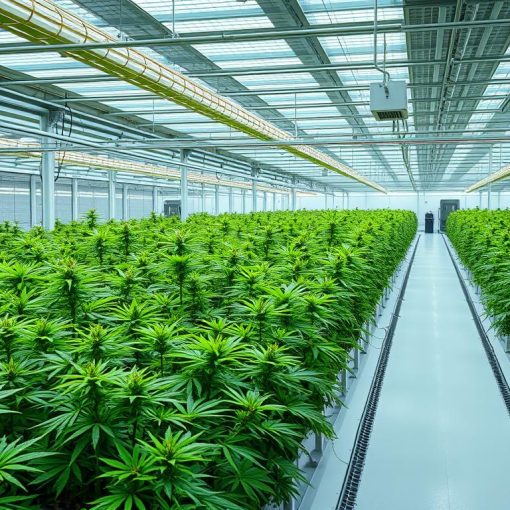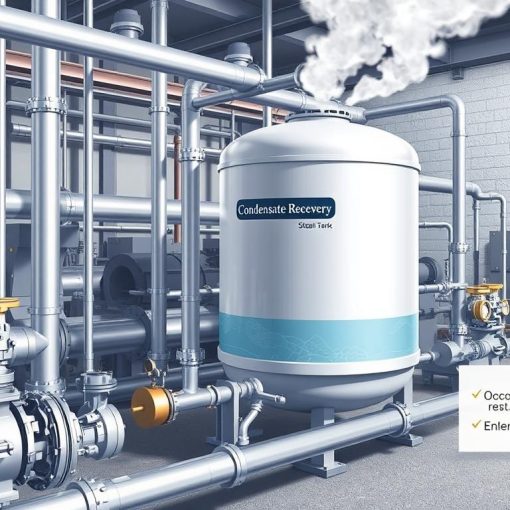Cannabis plants require adequate dissolved oxygen to thrive, particularly in the root zone. Healthy root development is crucial for overall plant well-being and maximizing yields.
By maintaining optimal dissolved oxygen levels, growers can significantly enhance plant growth and boost their cannabis yields. Proper oxygenation supports the roots’ ability to absorb nutrients, directly impacting the plant’s overall health.
Key Takeaways
- Optimal dissolved oxygen levels are crucial for healthy cannabis root development.
- Adequate oxygenation enhances plant growth and maximizes yields.
- Proper dissolved oxygen levels support nutrient absorption in the root zone.
- Maintaining optimal oxygen levels is key to healthy cannabis cultivation.
- Growers can boost their yields by ensuring proper dissolved oxygen levels.
The Critical Role of Oxygen in Cannabis Plant Development
Adequate oxygenation is essential for healthy cannabis plant development, impacting root health and metabolic processes. Cannabis plants require oxygen to undergo various physiological processes, and a deficiency can lead to reduced growth and lower yields.
Why Cannabis Plants Need Oxygen
Cannabis plants need oxygen to support their metabolic activities, including root respiration and nutrient uptake. Oxygen is crucial for the roots to function properly, absorbing necessary nutrients and water. Without sufficient oxygen, roots can become stressed, leading to poor plant performance.
The Relationship Between Oxygen and Root Health
The health of cannabis roots is directly linked to the availability of oxygen. Roots need oxygen to respire, a process that provides energy for nutrient absorption and other metabolic functions. Low oxygen levels can lead to root rot and other problems, negatively impacting plant health.
How Oxygen Affects Metabolic Processes
Oxygen plays a critical role in the metabolic processes of cannabis plants, including photosynthesis and respiration. Adequate oxygen levels ensure that these processes occur efficiently, supporting overall plant growth and development.
Dissolved Oxygen in Cannabis Cultivation: The Fundamentals
Understanding dissolved oxygen is crucial for cannabis cultivation. Dissolved oxygen refers to the amount of oxygen dissolved in water or a nutrient solution, which is essential for healthy root development and overall plant growth.
What Is Dissolved Oxygen?
Dissolved oxygen (DO) is the amount of oxygen present in water or a nutrient solution. It’s a critical parameter in cannabis cultivation as it directly affects the health and productivity of the plants. Adequate DO levels ensure that roots receive the oxygen needed for respiration.
How Dissolved Oxygen Affects Nutrient Uptake
Nutrient uptake is significantly influenced by dissolved oxygen levels. When DO is adequate, roots can efficiently absorb nutrients, leading to healthier plants. Low DO levels can result in nutrient deficiencies, as roots struggle to uptake essential nutrients.
The Science of Root Respiration
Root respiration is the process by which roots absorb oxygen and release carbon dioxide. Adequate dissolved oxygen is vital for this process, as it allows roots to “breathe” and maintain healthy metabolic functions. As one expert notes, “Roots need oxygen to function properly, just like the rest of the plant.” Ensuring sufficient DO levels is crucial for optimal root respiration and overall plant health.
By understanding and managing dissolved oxygen levels, cannabis growers can optimize their cultivation practices, leading to healthier plants and higher yields.
Optimal Dissolved Oxygen Levels for Cannabis Plants
Achieving optimal dissolved oxygen (DO) levels is crucial for healthy cannabis cultivation. Dissolved oxygen is essential for the root health and overall development of cannabis plants. Understanding the optimal DO levels for different growth stages and how various factors influence these levels can significantly impact plant health and yield.
Recommended DO Ranges for Different Growth Stages
Cannabis plants have different oxygen requirements at various growth stages. During the vegetative stage, cannabis plants require higher DO levels to support rapid growth and development. The recommended DO range for this stage is typically between 6-8 mg/L. In the flowering stage, the optimal DO range slightly decreases to 5-7 mg/L, as the plants’ energy is focused on bud development.
Variations Based on Growing Medium
The growing medium can significantly affect the availability of oxygen to the roots. For example, hydroponic systems tend to have lower oxygen levels compared to soil or coco coir. In hydroponics, it’s crucial to maintain higher DO levels, typically above 7 mg/L, to compensate for the reduced oxygen availability. In contrast, soil and coco coir tend to have more natural aeration, allowing for slightly lower DO levels.
Temperature Effects on Oxygen Solubility
Water temperature plays a critical role in determining the solubility of oxygen. As water temperature increases, the solubility of oxygen decreases. This means that in warmer growing conditions, cannabis plants may require additional oxygen supplementation to maintain optimal DO levels. Conversely, colder water can hold more oxygen, potentially reducing the need for additional aeration.
Signs of Oxygen Deficiency in Cannabis Plants
Identifying the signs of oxygen deficiency is crucial for maintaining healthy cannabis plants. Oxygen plays a vital role in root respiration and overall plant health, and a deficiency can manifest in various ways.
Visual Symptoms of Low Oxygen Stress
Cannabis plants suffering from low oxygen levels often exhibit visual symptoms such as yellowing or droopy leaves, slow growth, and wilting. These symptoms can be mistaken for other issues, making it essential to monitor your plants closely.
Root Zone Problems Caused by Hypoxia
Hypoxia, or low oxygen levels, in the root zone can lead to root rot and other problems. When roots don’t receive enough oxygen, they become vulnerable to pathogens and nutrient deficiencies, further compromising plant health.
Long-term Effects on Plant Health and Yield
Prolonged oxygen deficiency can have severe long-term effects on cannabis plants, including reduced yields and lower quality buds. Maintaining optimal oxygen levels is critical for maximizing plant health and productivity.
| Symptom | Cause | Effect |
|---|---|---|
| Yellowing Leaves | Oxygen Deficiency | Reduced Photosynthesis |
| Root Rot | Hypoxia | Plant Death |
| Slow Growth | Nutrient Deficiencies | Lower Yield |
By recognizing the signs of oxygen deficiency and taking prompt action, cannabis growers can prevent long-term damage and ensure a healthy, bountiful harvest.
Measuring Dissolved Oxygen in Your Cannabis Grow
To ensure healthy cannabis plants, growers must accurately measure dissolved oxygen. Dissolved oxygen (DO) is a critical parameter in cannabis cultivation, affecting root health and overall plant development. Measuring DO levels helps growers identify potential issues before they become severe.
Types of DO Meters and Testing Equipment
There are several types of DO meters available, each with its own advantages. Optical DO meters are highly accurate and require minimal maintenance, while polarographic sensors are more traditional but may need more frequent calibration. When choosing a DO meter, consider factors such as accuracy, ease of use, and compatibility with your growing system.
How to Take Accurate Measurements
To take accurate DO measurements, ensure that your meter is properly calibrated according to the manufacturer’s instructions. Take readings at the root zone, as this is where oxygen levels are most critical. Avoid contaminating the sample with debris or oils from your skin, as this can affect readings.
Establishing a Testing Schedule
Consistency is key when monitoring DO levels. Establish a regular testing schedule to track changes in oxygen levels over time. This will help you identify patterns and make adjustments as needed to maintain optimal DO levels.
Interpreting Your DO Readings
When interpreting DO readings, consider the growth stage of your plants and the specific requirements of your growing system. Generally, DO levels between 5-8 ppm are considered optimal for cannabis cultivation. If readings are consistently outside this range, adjust your aeration and watering practices accordingly.
Techniques to Increase Dissolved Oxygen in Soil Grows
Increasing dissolved oxygen in soil grows is a key factor in promoting healthy root development and overall cannabis plant vigor. Dissolved oxygen (DO) is essential for the roots to respire and absorb nutrients effectively.
TriCleanAir DirOxy System
Using a DirOxy system will allow direct oxygen injection into your irrigation water. This give plants the optimal o2 in the root zone. We recoomend usng a Oxygen Generator for the most cost effective approach.
Soil Aeration Methods
Soil aeration is critical for increasing DO levels. Techniques such as using a fork to gently aerate the soil or incorporating perlite/vermiculite can improve soil structure and allow more oxygen to reach the roots.
A study by the Cannabis Research Institute found that aerating the root zone can increase DO levels by up to 20%. This can be achieved through manual aeration or by using automated aeration systems.
Watering Practices That Promote Oxygenation
Watering practices play a significant role in maintaining optimal DO levels. Avoiding overwatering and ensuring proper drainage can prevent waterlogged soil, which can lead to low DO levels.
“The key to healthy roots is not just watering but also ensuring that the soil has the right balance of water and air.” –
Beneficial Microorganisms for Oxygen Enhancement
Beneficial microorganisms, such as mycorrhizal fungi and bacteria, can enhance oxygen levels in the soil by improving its structure and promoting root health.
| Microorganism | Benefit |
|---|---|
| Mycorrhizal Fungi | Improves root nutrient uptake and soil structure |
| Beneficial Bacteria | Enhances soil health and promotes root growth |
Container Selection and Drainage Considerations
Choosing the right container and ensuring proper drainage are crucial for maintaining optimal DO levels. Containers with good drainage holes prevent waterlogging and allow for better aeration.
By implementing these techniques, cannabis growers can significantly improve dissolved oxygen levels in their soil grows, leading to healthier plants and higher yields.
Optimizing Dissolved Oxygen in Hydroponic Systems
Optimizing dissolved oxygen levels is crucial for the health and productivity of cannabis plants grown in hydroponic systems. Hydroponics, by its nature, can sometimes lead to reduced oxygen availability compared to traditional soil-based growing methods.
Air Stone Selection and Placement
One effective method for increasing dissolved oxygen in hydroponic systems is through the use of air stones. Air stone selection is critical, as different materials and pore sizes can significantly affect oxygen output. Fine-pore air stones, for instance, produce smaller bubbles that dissolve more easily in water, increasing oxygen availability.
Proper placement of air stones is also vital. Positioning them near the roots or at the bottom of the reservoir can maximize oxygen delivery. However, it’s essential to ensure that the air stones are not causing excessive turbulence or water circulation that might stress the roots.
Water Temperature Management
Water temperature plays a significant role in dissolved oxygen levels. Warmer water holds less oxygen than cooler water. Therefore, managing water temperature is crucial for maintaining optimal DO levels. Growers should aim to keep their hydroponic system’s water temperature between 65°F to 75°F (18°C to 24°C) for most cannabis strains.
Venturi Systems and Waterfall Techniques
Venturi systems and waterfall techniques are innovative methods to enhance oxygenation in hydroponics. Venturi systems work by injecting air into the water stream, creating a region of low pressure that draws in air, thus enriching the water with oxygen. Waterfall techniques involve allowing the nutrient solution to cascade from a height into the reservoir, thereby aerating the water.
DIY Oxygen Enhancement Solutions
For growers looking to implement cost-effective solutions, DIY oxygen enhancement methods can be quite effective. Using aquarium air pumps with air stones or creating a simple waterfall system by adjusting the irrigation setup are practical approaches. Additionally, incorporating oxygen-rich materials or supplements can further support root health.
By implementing these strategies, hydroponic cannabis growers can significantly improve the dissolved oxygen levels in their systems, leading to healthier plants and higher yields.
Dissolved Oxygen Strategies for Alternative Growing Methods
To maximize cannabis yields, growers using alternative methods must carefully manage dissolved oxygen levels. Alternative growing methods, such as aeroponics, deep water culture, and coco coir, offer unique benefits but also present specific challenges in maintaining optimal dissolved oxygen levels.
Aeroponics and Oxygen Management
Aeroponic systems, which deliver nutrients to roots through a fine mist, require precise management of oxygen levels. The fine misting helps to increase oxygen availability, but the roots still need adequate oxygen to thrive. Regular monitoring and adjustments to the misting schedule can help maintain optimal dissolved oxygen levels.
Deep Water Culture Considerations
Deep Water Culture (DWC) systems involve suspending roots in a nutrient-rich water solution. In DWC systems, oxygenation is critical as the roots are submerged. Using air stones or diffusers can help increase dissolved oxygen levels. Ensuring adequate oxygenation is crucial to prevent root rot and promote healthy plant growth.
Coco Coir and Other Soilless Media
Coco coir and other soilless media have different oxygen-holding capacities compared to traditional soil. Coco coir, for instance, can retain a significant amount of oxygen, but it still requires careful management to ensure adequate oxygen levels. Regular aeration and monitoring can help maintain optimal conditions.
Ebb and Flow System Optimization
Ebb and flow systems, also known as flood and drain systems, periodically flood the grow medium with nutrient solution and then drain it. This cycle helps to increase oxygen availability in the root zone. Optimizing the frequency and duration of these cycles can enhance dissolved oxygen levels.
| Growing Method | Oxygen Management Strategy | Benefits |
|---|---|---|
| Aeroponics | Fine misting, regular monitoring | Increased oxygen availability |
| Deep Water Culture | Air stones or diffusers | Prevents root rot, promotes growth |
| Coco Coir | Regular aeration, monitoring | Maintains optimal oxygen levels |
| Ebb and Flow | Optimizing flood cycles | Enhances oxygen in root zone |
Environmental Factors Affecting Dissolved Oxygen Levels
Cannabis growers must understand how environmental factors such as temperature, humidity, and water quality affect dissolved oxygen levels. These factors can significantly impact the health and yield of cannabis plants.
Seasonal Considerations
Seasonal changes can affect the temperature and quality of the water used in cannabis cultivation. During warmer months, the solubility of oxygen in water decreases, potentially leading to lower dissolved oxygen levels. Conversely, colder water can hold more oxygen, but extreme cold can also stress plants.
Grow Room Temperature and Humidity
Grow room conditions, including temperature and humidity, play a crucial role in maintaining optimal dissolved oxygen levels. Higher temperatures decrease oxygen solubility, while high humidity can lead to waterlogged soil, further reducing oxygen availability to roots.
Water Source Quality and Treatment
The quality of the water source used for irrigation can significantly impact dissolved oxygen levels. Water with high levels of contaminants or nutrients can lead to imbalances in the root zone, affecting oxygen availability. Proper water treatment, such as filtration and aeration, can help maintain optimal dissolved oxygen levels.
By understanding and managing these environmental factors, cannabis growers can optimize dissolved oxygen levels, promoting healthy plant growth and maximizing yields.
Common Myths and Misconceptions About Dissolved Oxygen
Many cannabis cultivators harbor misconceptions about dissolved oxygen that can significantly impact their crop’s health and yield. Dissolved oxygen is crucial for healthy root development and overall plant growth, but several myths have been perpetuated about its use in cannabis cultivation.
Debunking “More Is Always Better”
One common myth is that more dissolved oxygen is always better for cannabis plants. While oxygen is essential, over-oxygenation can be harmful. Too much oxygen can lead to oxidative stress, damaging roots and reducing plant health. The key is finding the optimal range for dissolved oxygen, which typically falls between 5-8 ppm for most cannabis cultivars.
The Truth About Hydrogen Peroxide Use
Hydrogen peroxide is often used to increase oxygen levels in nutrient solutions. However, its effectiveness and safety depend on proper usage. Using too much hydrogen peroxide can harm beneficial microbes and damage roots. It’s essential to follow recommended dosages and monitor plant response.
Misconceptions About Bubbling Nutrient Solutions
Bubbling nutrient solutions with air stones is a common practice to increase dissolved oxygen. While this method does help, it’s not without its drawbacks. Excessive bubbling can lead to nutrient solution instability, causing pH fluctuations. A balanced approach, potentially incorporating other oxygenation methods, is often more effective.
| Myth | Reality |
|---|---|
| More oxygen is always better | Over-oxygenation can cause oxidative stress |
| Hydrogen peroxide is a safe oxygen booster | Excessive use can harm microbes and roots |
| Bubbling nutrient solutions is sufficient | Can cause pH fluctuations if excessive |
Advanced Equipment for Dissolved Oxygen Management
To optimize cannabis cultivation, growers are turning to advanced equipment for managing dissolved oxygen levels. This equipment is crucial for maintaining the health and productivity of cannabis plants.
Commercial Oxygenation Systems
Commercial oxygenation systems are designed to increase dissolved oxygen levels in cultivation systems. These systems can significantly enhance root health and overall plant vigor.
Automated Monitoring and Control
Automated monitoring and control systems allow growers to maintain optimal dissolved oxygen levels with minimal manual intervention. These systems can be integrated with other cultivation controls for a comprehensive management approach.
The benefits of automated systems include:
- Real-time monitoring of DO levels
- Automatic adjustments to maintain optimal levels
- Data logging for analysis and optimization
Cost-Benefit Analysis of Oxygen Enhancement Equipment
When considering the adoption of oxygen enhancement equipment, growers must weigh the costs against the potential benefits. The following table provides a comparison of different equipment options:
| Equipment Type | Initial Cost | Operating Cost | Expected Yield Increase |
|---|---|---|---|
| Commercial Oxygenation Systems | $1,000 – $5,000 | $50 – $200/month | 15% – 25% |
| Automated Monitoring Systems | $500 – $2,000 | $20 – $100/month | 10% – 20% |
| Venturi Systems | $300 – $1,500 | $30 – $150/month | 12% – 22% |
By investing in advanced equipment for dissolved oxygen management, cannabis growers can potentially increase their yields and improve plant health. It’s essential to conduct a thorough cost-benefit analysis to determine the most suitable equipment for your specific cultivation needs.
Conclusion: Maximizing Your Cannabis Yields Through Proper Oxygenation
Proper oxygenation is crucial in cannabis cultivation, directly impacting plant health and yield. By maintaining optimal dissolved oxygen levels, growers can promote healthy root development, efficient nutrient uptake, and robust metabolic processes.
To achieve maximum yields, it’s essential to monitor and adjust dissolved oxygen levels according to the specific needs of your plants at different growth stages. Techniques such as soil aeration, air stone selection, and water temperature management can significantly enhance oxygen availability.
By implementing these strategies and understanding the importance of proper oxygenation, cannabis cultivators can optimize their growing practices. This leads to healthier plants, increased productivity, and ultimately, maximizing yields in cannabis cultivation.

